Roasted kabocha squash is a healthy and delicious side dish or appetizer that’s easy to prepare. Naturally sweet, enjoy this versatile winter squash seasoned with a little salt and pepper or toss with maple syrup, cinnamon, and melted butter.
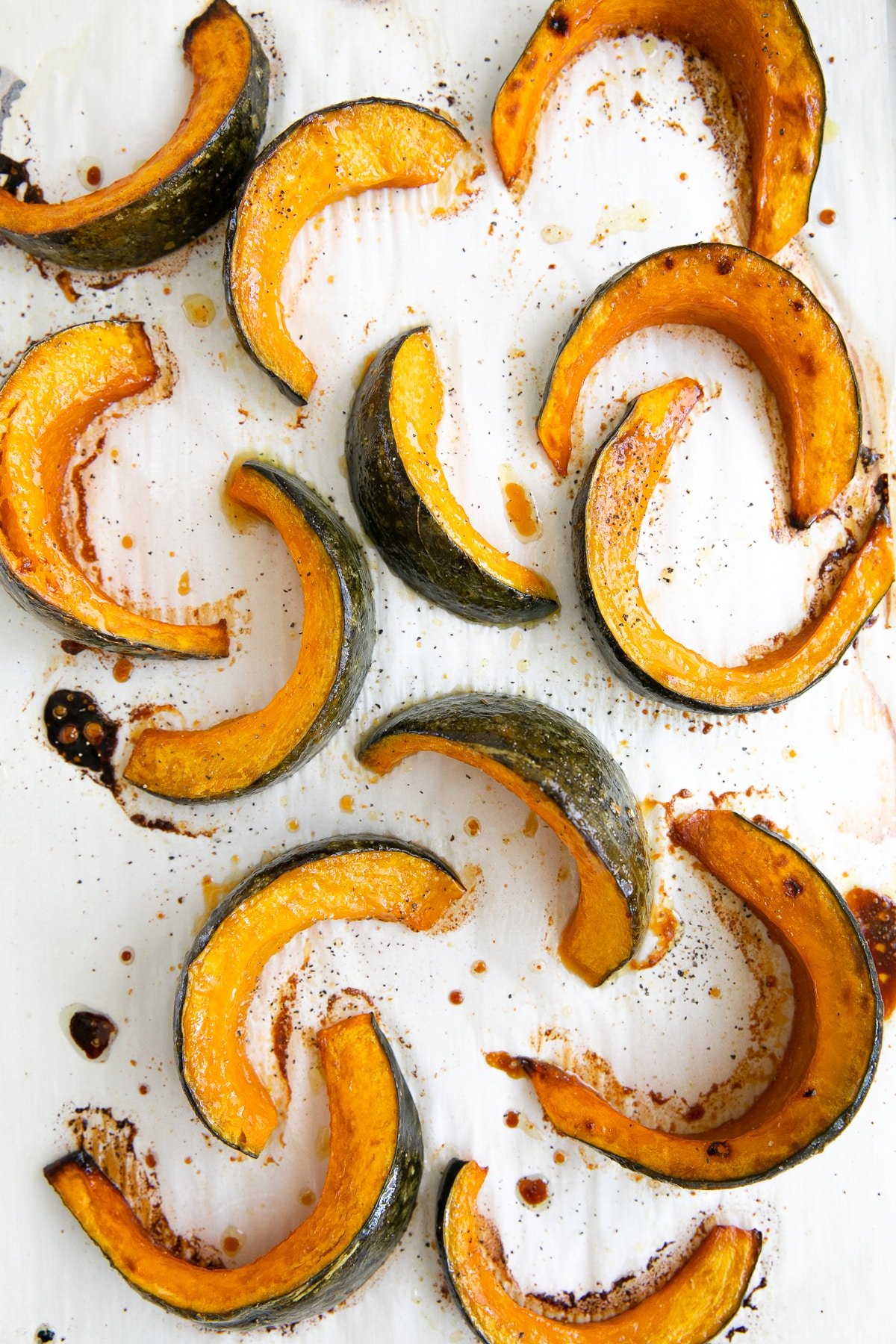
Kabocha Squash
Say hello to beautifully roasted kabocha squash!
Also known as Japanese pumpkin or Korean pumpkin, kabocha squash comes with a hard, tough exterior, dull, knobby-looking, dark-green skin, and shape nearly identical to that of a round, squat pumpkin.
But despite its not-so-appealing exterior, this wonderful squash is filled with sweet and delicious orange flesh that has an earthy, buttery, velvety texture that, when cooked, tastes like a cross between sweet potatoes and chestnuts. The skin also softens after cooking and is completely safe to eat.
Preparing kabocha squash for cooking is easy – so don’t let its tough exterior fool you. Peeling is not recommended, simply cut it into thick slices, wedges, or cubes, toss in a little olive oil, salt, and pepper, and roast in the oven until tender.
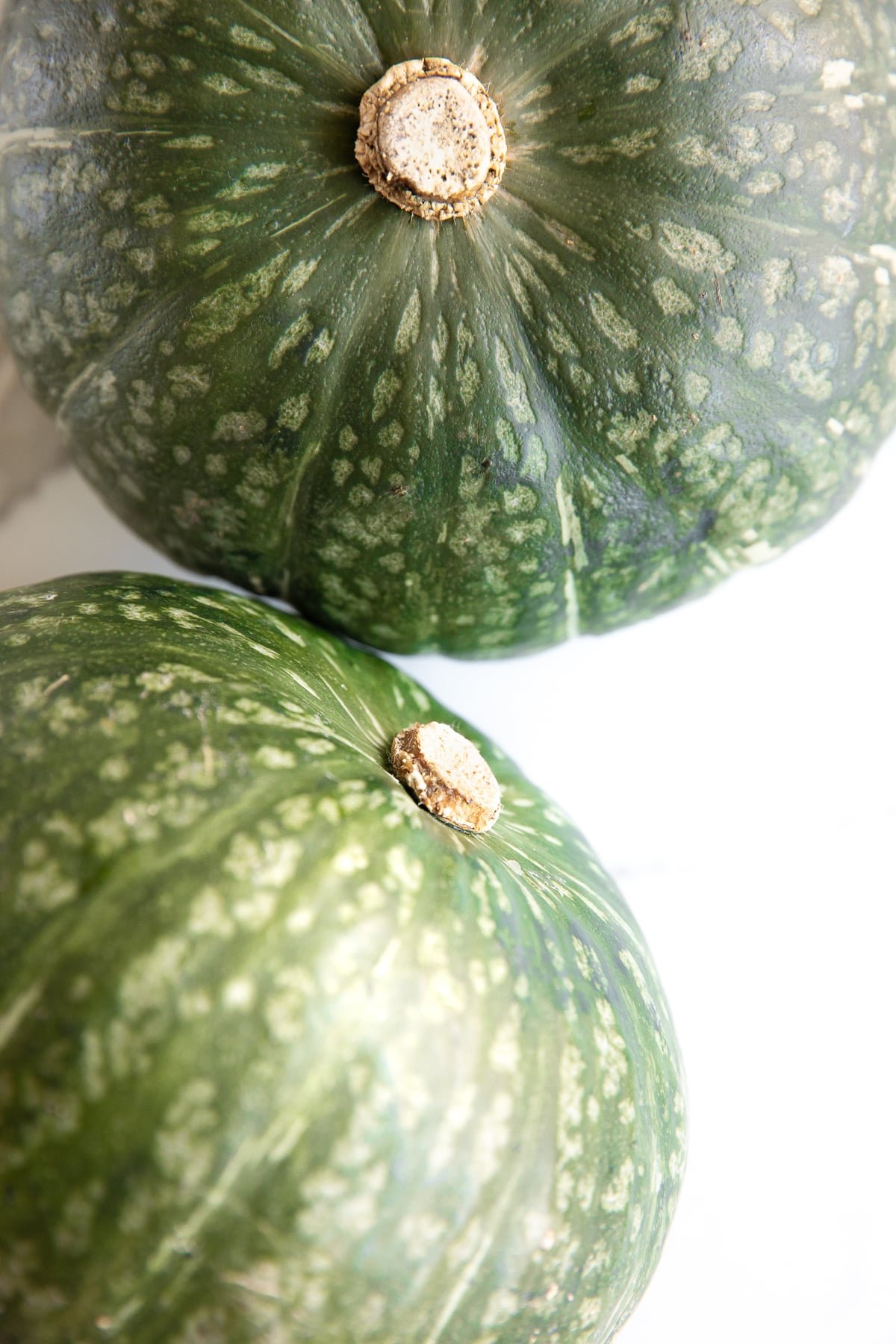
Cutting Kabocha Squash for Cooking
There are several ways to cut kabocha squash:
- Start by cutting off the stem – just enough to expose some of the orange flesh which is easier to cut into than the tough outer skin. Use the pointy end of a sharp knife to cut the squash on one side from stem to base (carefully rocking the knife back and forth). Repeat on the other side. the result will be two kabocha halves.
- Microwave: Transfer the whole kabocha squash to the microwave. Microwave about 2 minutes to start with additional 1-minute increments until the kabocha is soft enough to cut in half.
- Oven: Preheat oven to 350 degrees F. Loosely tent the kabocha squash with foil and bake for about 15 minutes. Remove from the oven and allow it to cool completely before cutting it in half.
After the kabocha squash has been cut in half, you may cut it into large slices, wedges, or cubes.
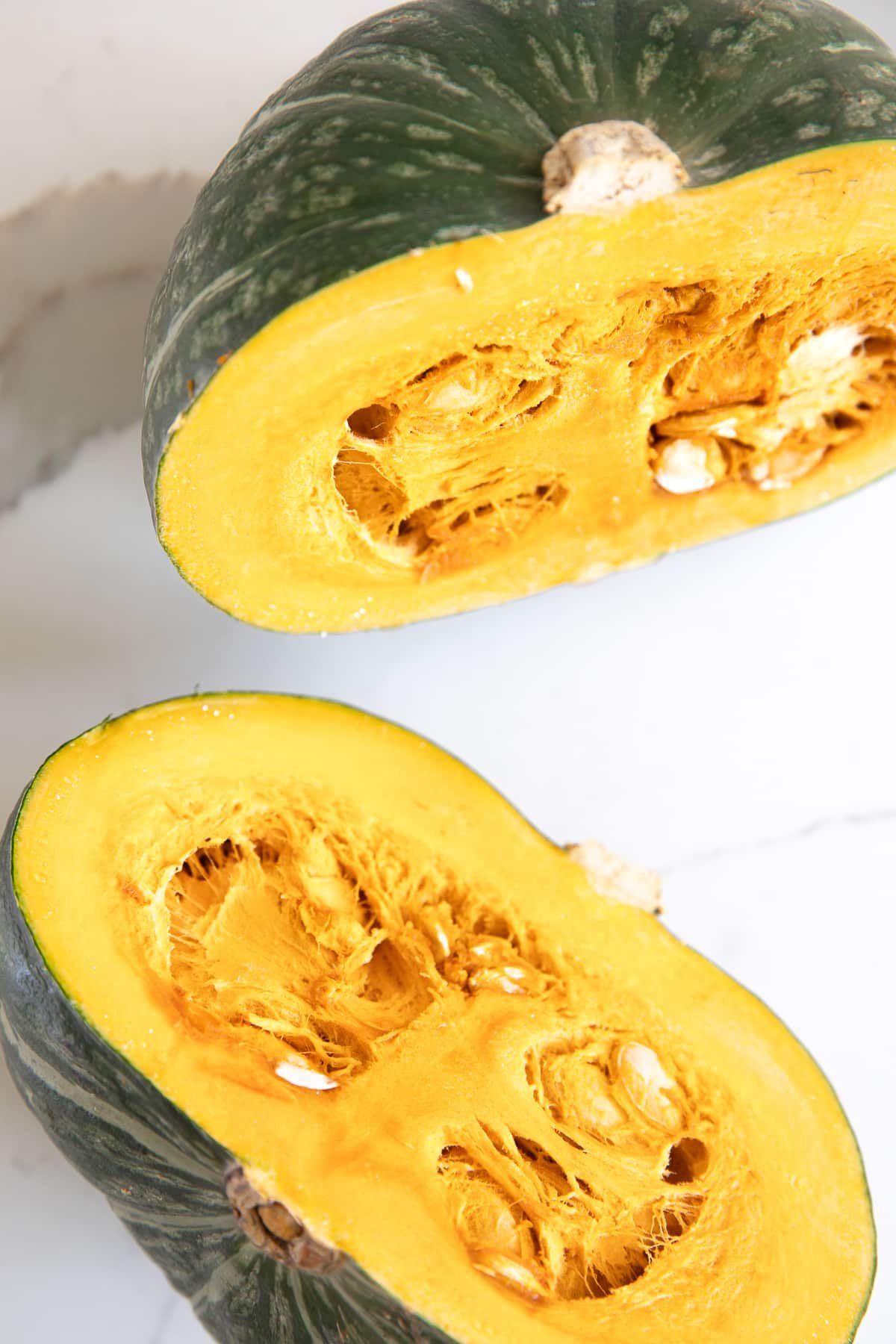
How to Roast Kabocha Squash
Always start by cleaning and scrubbing your squash. The skin is completely edible (and delicious!), but even if you don’t plan to eat the skin, it’s a good idea to give it a good wash. After the skin is washed, dry it thoroughly. The last thing you want is a wet and slippery squash.
Cut the squash according to one of the methods above. Once the squash has been cut into two halves, use a spoon to scoop out the seeds and stringy bits. You can save the seeds to roast later on or discard them.
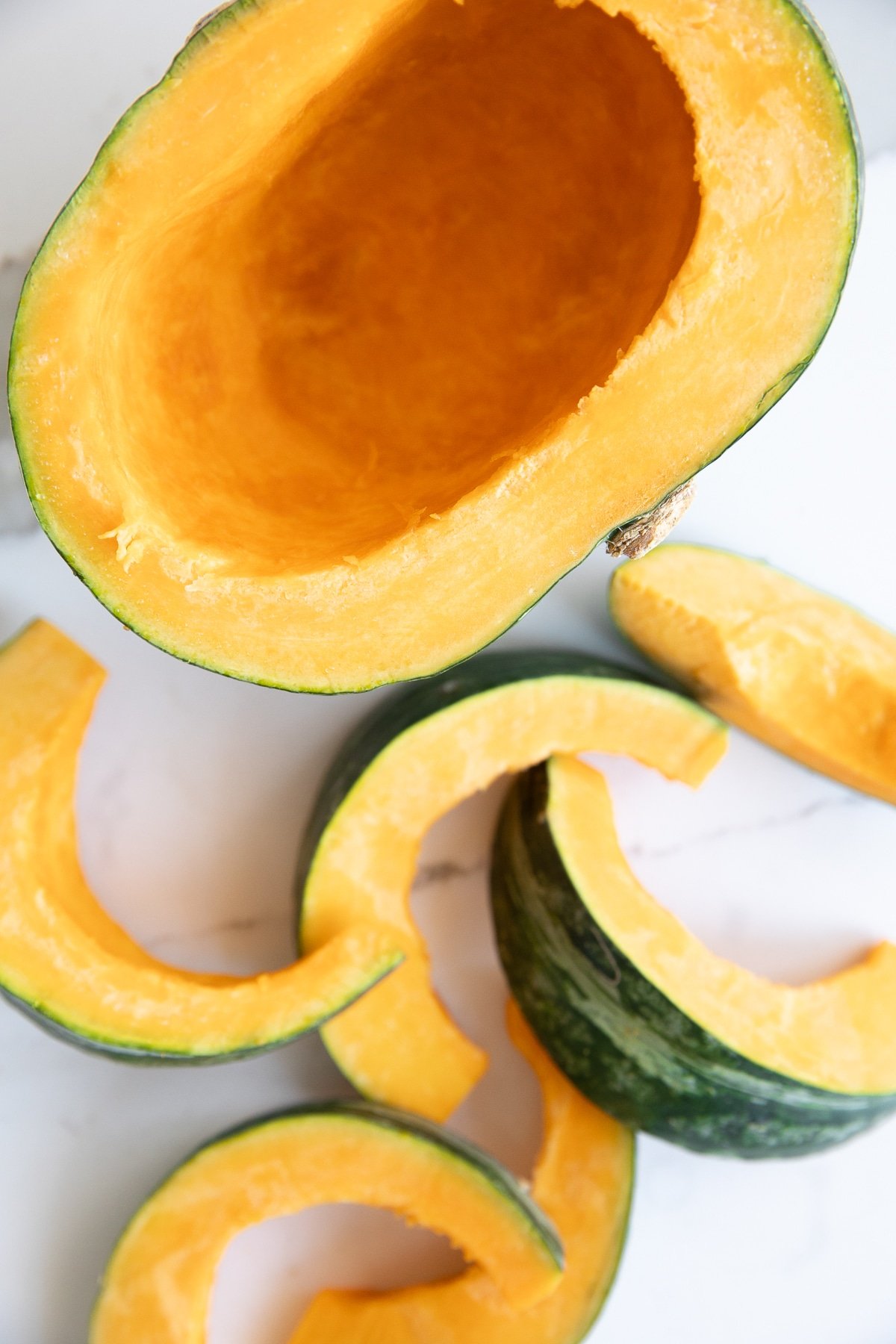
In the meantime, line a large rimmed baking sheet with parchment paper and preheat your oven to 400°F.
Cut your kabocha squash into halves, quarters, wedges, or cubes and combine with a little olive oil, maple syrup, ground cinnamon, sea salt, and black pepper (if using). Use your hands or a pastry brush to coat the entire surface.
Transfer the kabocha squash to your prepared baking sheet in a single layer or, if you’re baking halves, place them cut side down. Cook according to the following cooking times:
- Halves – 45 to 60 minutes
- Quarters – 35-45 minutes
- Wedges -25-35 minutes
- Small cubes – 20-30 minutes
Season with additional maple syrup, cinnamon, and salt, to taste.
Tip – make it a complete one-pan meal and roast with other veggies or chicken breasts and chicken thighs. Use a digital meat thermometer to ensure that the chicken has reached an internal temperature of 165 degrees before serving.
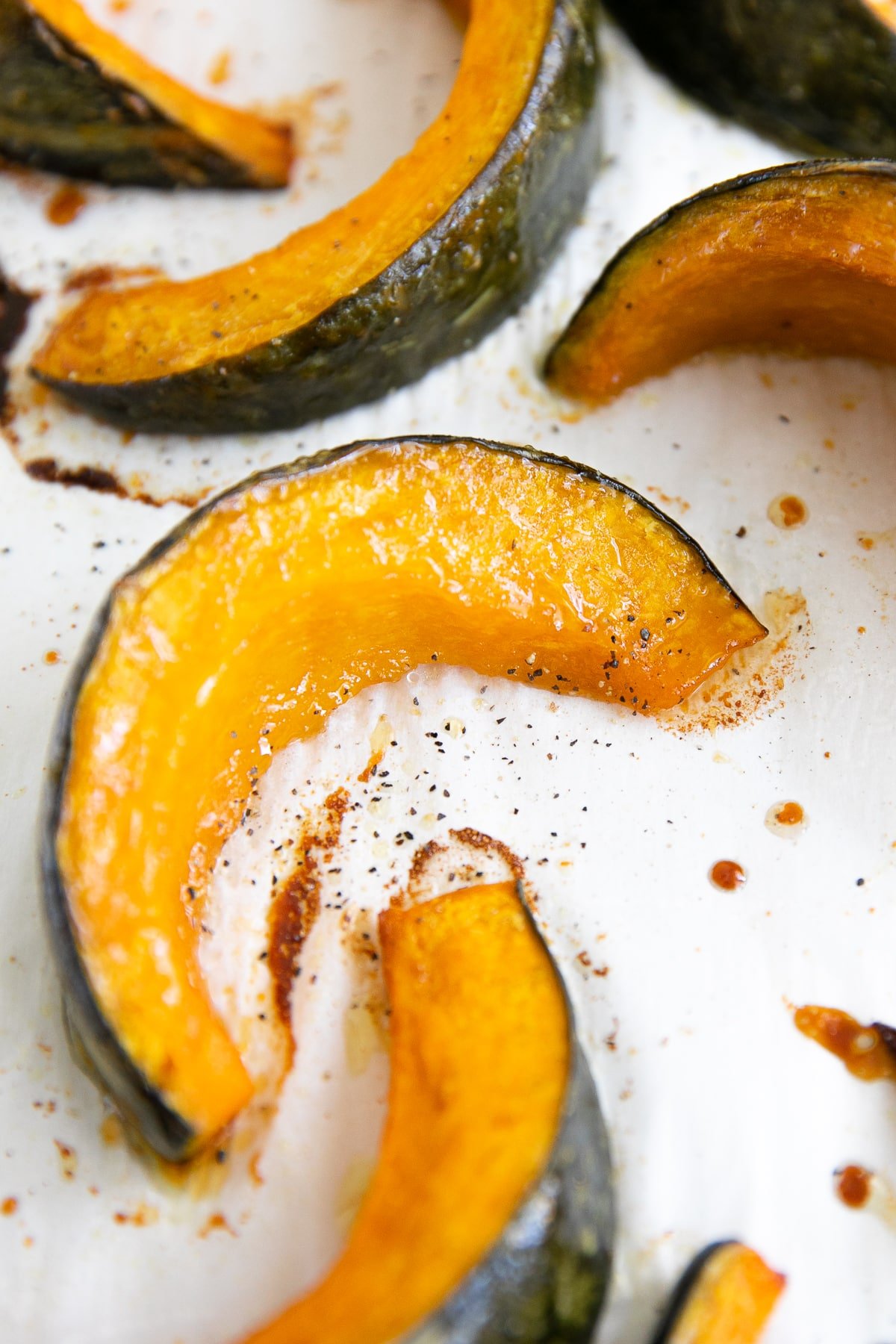
How Long Does Kabocha Squash Last?
Whole, uncut kabocha squash will last anywhere between 2-4 months when stored in a cool, dry place.
Leftovers kept in an airtight container in the refrigerator should last between 3-4 days.
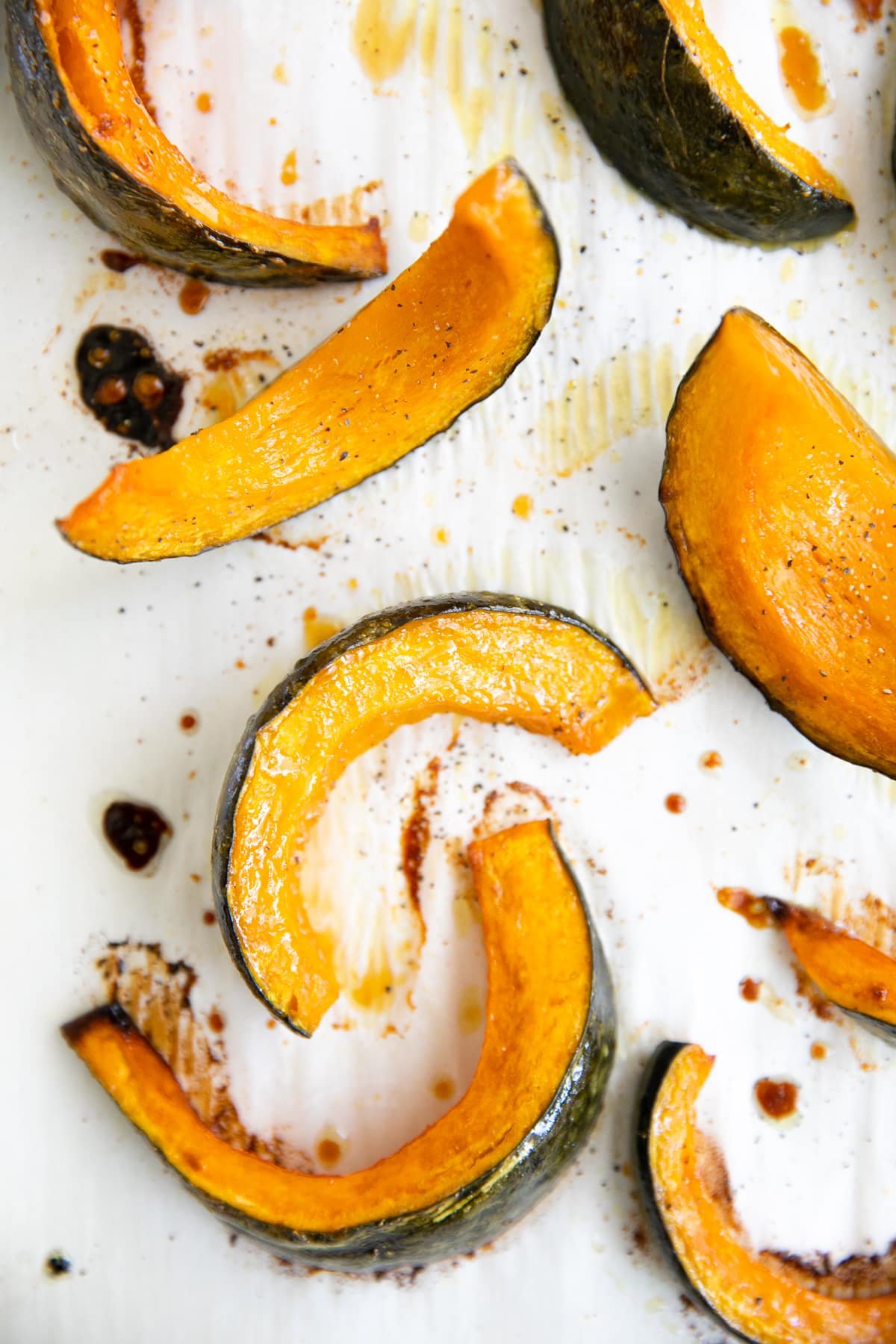
Check out these other yummy squash recipes,
- Easy Acorn Squash Soup Recipe
- Vegetarian Butternut Squash Black Bean Soup
- Miso Coconut Butternut Squash Soup
- Curried Pumpkin Soup Recipe (Vegan + Gluten-Free)
- Maple Roasted Delicata Squash Recipe
- How to Make Pumpkin Puree from Scratch
Have you tried making this roasted kabocha squash recipe?
Tell me about it in the comments below! I always love to hear your thoughts. And tag me #theforkedspoon on Instagram if you’ve made any of my recipes, I always love to see what you’re cooking in the kitchen.
RECIPE CARD

Roasted Kabocha Squash Recipe
Ingredients
- 1 medium kabocha squash - approximately 2-3 pounds
- 2 teaspoon olive oil - substitute with coconut oil or avocado oil
- 1 tablespoon maple syrup - or brown sugar
- ½ teaspoon ground cinnamon
- ½ teaspoon salt
- ¼ teaspoon black pepper - optional
Instructions
- Preheat oven to 400°F. Line a large rimmed baking sheet with parchment paper or aluminum foil.
- Wash and thoroughly dry your squash (even if you don’t plan on eating the skin). Transfer the squash to a large cutting board and carefully slice from the stem to the base using a sharp knife (see notes). Use a spoon to scoop out the seeds and stringy bits from the center and slice the two halves into 4-6 wedges or small cubes.
- In a large bowl, mix the squash wedges with olive oil, maple syrup, cinnamon, salt, and pepper (if using). Use your hands or a pastry brush to coat the entire surface.
- Transfer the seasoned squash to your prepared baking sheets. Spread in a single layer.
- Bake for 15 minutes, remove the pan from the oven, flip each wedge over, and continue to bake for an additional 10-15 minutes more.
- Season with additional maple syrup, cinnamon, and salt, to taste.
Jessica’s Notes
- Kabocha squash is naturally gluten-free, vegan, and lower in carbs when compared to other winter squash (approximately 6 grams of carbs per 1/2 cup of roasted squash).
- Easily found in late summer and fall, you may have luck finding this squash much earlier in the summer season, or even year-round, from major grocery stores like Safeway, Whole Foods (where I found these in June), and Trader Joe’s. Give your local Asian market a call and see if they have any in stock or head to your local farmer’s market.
- If you prefer a more natural sweet-tasting kabocha squash, omit the maple syrup and cinnamon.
- If you’re having a hard time slicing your squash in half, transfer the squash to the microwave. Microwave for 2-4 minutes (time will vary depending on the size of your squash and how soft you’d like it). Careful not to microwave for too long – we’re not cooking it, just making it soft enough to cut.
- The skin is completely edible.
- Leftover cooked squash will last for approximately 3-4 days when stored in the refrigerator in a sealed container.
- You may also freeze leftover cooked squash in an airtight container for up to 3-4 months.
- Save and roast the seeds just as you would pumpkin seeds.
- Serving size equals 1/4 of a medium squash, cooked.
Nutritional Information
(Nutrition information provided is an estimate and will vary based on cooking methods and specific brands of ingredients used.)


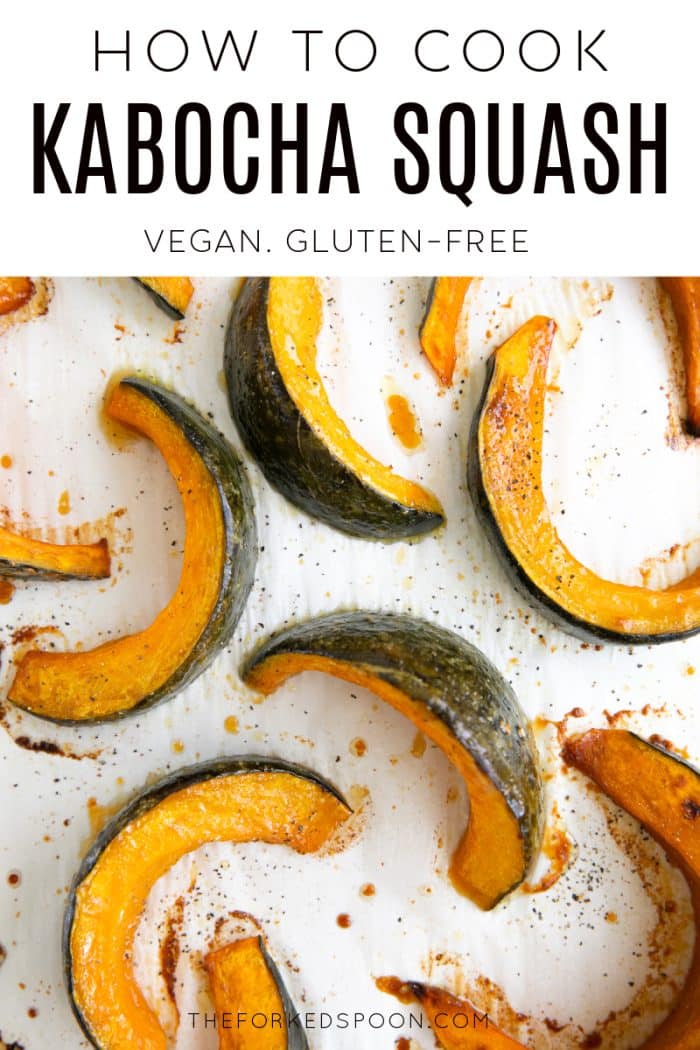


I have been “reaching out” and trying foods that have been out of my bubble. Since kabocha is readily available I grabbed one to try. Jessica’s recipe sounded very tasty and easy. And it was!!! I am so glad that I tried this. I now make it a regular on my veggie market list.
I did use real maple syrup and olive oil.
I am glad that my recipe helped with your reaching out project 🙂